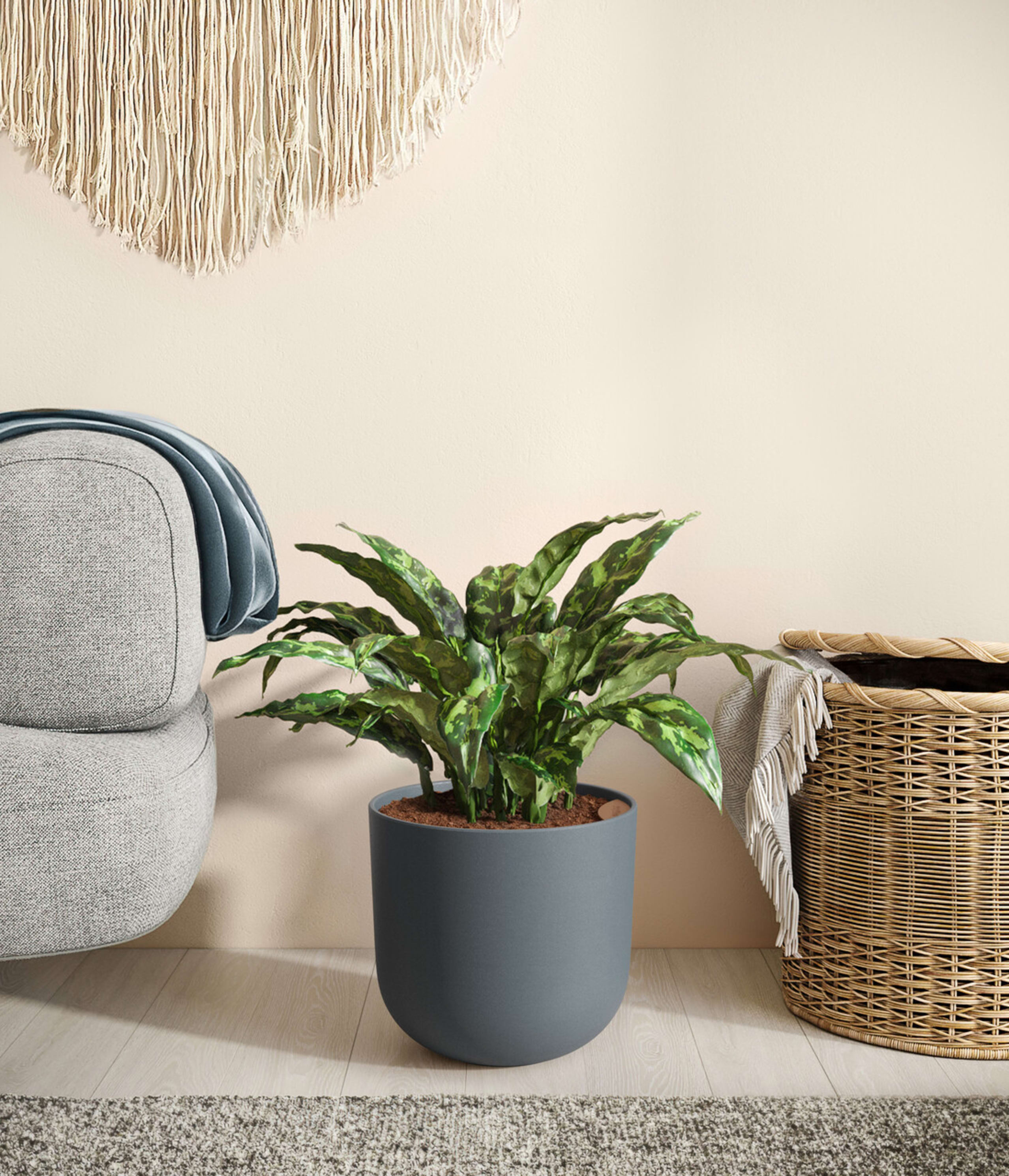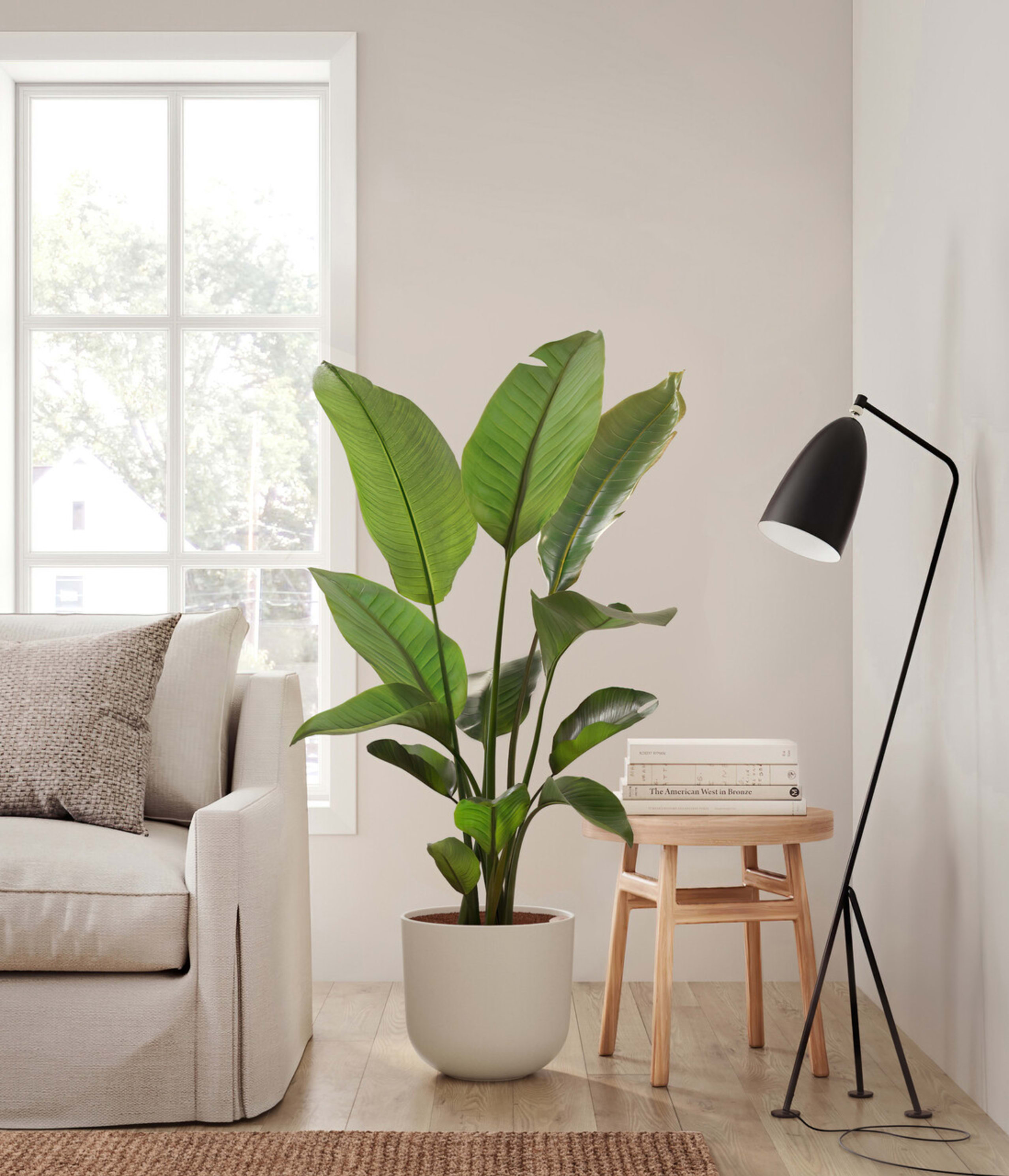How to Care for Black Pagoda Plant
About Black Pagoda Lipstick Plant
Native to the tropical forests of Southeast Asia, the Lipstick Plant 'Black Pagoda' is admired for its deep green, purple, and black patterned leaves, which create a striking contrast in any indoor environment. This plant is not just about its stunning foliage; it also produces vibrant red, tubular flowers that typically bloom in the warmer months, adding a splash of color to your home. Its trailing growth habit makes it ideal for high shelves or hanging displays, where its vines can elegantly cascade, adding both drama and elegance to your decor.
Other common names
- Lipstick Plant 'Black Pagoda'
- Black Pagoda Plant
- Zebra Vine
- Aeschynanthus longicaulis
- Aeschynanthus Marmoratus
- Zebra Basket Vine
How Often Should I Water My Black Pagoda Lipstick Plant?
With easyplant, watering your Lipstick Plant 'Black Pagoda' is effortless. Simply check the easyplant reservoir once a month and refill it when empty. The self-watering system ensures your plant receives consistent moisture, preventing both overwatering and underwatering. This makes caring for your plant simple and stress-free, allowing it to thrive with minimal effort.
Black Pagoda Lipstick Plant Light Needs
Lipstick Plant 'Black Pagoda' grows best in a space with bright indirect light, where the sun rays are diffused, and can also adapt to spaces with medium to low light. Avoid placing it in spaces without natural light or with direct sunlight.
Ideal locations include near an east or north-facing window, where it can receive soft, filtered light throughout the day. Placing it on a high shelf or in a spot where the light is consistent but not too intense will help maintain its vibrant leaf colors and promote healthy growth.
Black Pagoda Lipstick Plant Care
The Lipstick Plant 'Black Pagoda' is relatively low-maintenance and thrives with minimal effort. Ensure it’s placed in bright indirect light and water it once a month using the easyplant system. Rotate the plant periodically to encourage even growth and prevent it from leaning toward the light. Regularly cleaning the leaves with a damp cloth will help them absorb light more effectively and keep your plant looking its best. By following these simple steps, your Lipstick Plant will remain healthy and vibrant.
How Big Will My Black Pagoda Lipstick Plant Grow?
The Lipstick Plant 'Black Pagoda' has a trailing growth habit, making it perfect for high shelves or areas where its vines can elegantly cascade. Under optimal conditions, its vines can reach up to 2-3 feet in length, adding a lush, dramatic look to your space. To encourage fuller growth and a bushier appearance, regularly pinch back the tips of the vines. To do this, simply use your fingers or small scissors to gently remove the growing tips. This will stimulate new growth along the stems, resulting in a denser plant. Regularly rotating the plant ensures even exposure to light, promoting balanced growth and preventing the plant from leaning toward one direction.
Temperature & Humidity
The Lipstick Plant 'Black Pagoda' thrives in warm, humid environments, with an ideal temperature range between 65°F and 85°F (18°C – 29°C). It's important to keep it away from cold drafts and sudden temperature changes, which can stress the plant and affect its growth. While this plant can adapt to average indoor humidity levels, it will flourish best in slightly higher humidity. If the air in your home is particularly dry, consider placing the plant near other plants to create a more humid microenvironment, or use a pebble tray with water beneath the plant. To do this, fill a shallow tray with pebbles, add water until it just covers the pebbles, and place the plant's pot on top. As the water evaporates, it will create a more humid environment around the plant.
Is Black Pagoda Lipstick Plant Toxic for Pets & Kids?
The Lipstick Plant 'Black Pagoda' is generally non-toxic to pets and humans, making it a safe choice for households with children and animals. While it’s always a good idea to keep plants out of reach of curious pets and young children, this plant doesn’t pose a significant risk if accidentally ingested. However, it’s still best to monitor interactions to ensure everyone’s safety.
Troubleshooting Common Problems With Black Pagoda Lipstick Plant
In the first few days after bringing your Lipstick Plant 'Black Pagoda' home, it may show some signs of adjustment, such as slight drooping or a few yellowing leaves. These should resolve as the plant acclimates to its new environment. If you notice persistent drooping or yellowing, it could be due to overwatering. Make sure you’re following the easyplant watering instructions, allowing the reservoir to empty completely before refilling it, no more than once a month. Crispy or browning tips may indicate low humidity or underwatering. If pests are suspected, look for small, discolored spots, sticky residue on the leaves, or tiny insects like spider mites or scale. These pests can be treated with insecticidal soap or neem oil. Regularly cleaning the leaves with a damp cloth can help prevent infestations and keep your plant healthy.
Frequently Asked Questions about Black Pagoda Lipstick Plant Plant
- Is Lipstick Plant 'Black Pagoda' rare?
Yes, the Lipstick Plant 'Black Pagoda' is considered relatively rare and is highly sought after by plant enthusiasts for its unique foliage and seasonal blooms.
- How do you care for a Lipstick Plant 'Black Pagoda'?
Place it in bright indirect light, water once a month with the easyplant system, and maintain a warm, slightly humid environment. Rotate regularly and clean the leaves to keep the plant healthy.
- How much light does a Lipstick Plant 'Black Pagoda' need?
It thrives in bright, indirect light but can adapt to medium to low light conditions.
- Is Lipstick Plant 'Black Pagoda' toxic?
No, the Lipstick Plant 'Black Pagoda' is non-toxic to pets and humans, making it a safe addition to your home.

 Small Plants
Small Plants Medium Plants
Medium Plants Plants Collections
Plants Collections Large Plants
Large Plants Huge Plants
Huge Plants